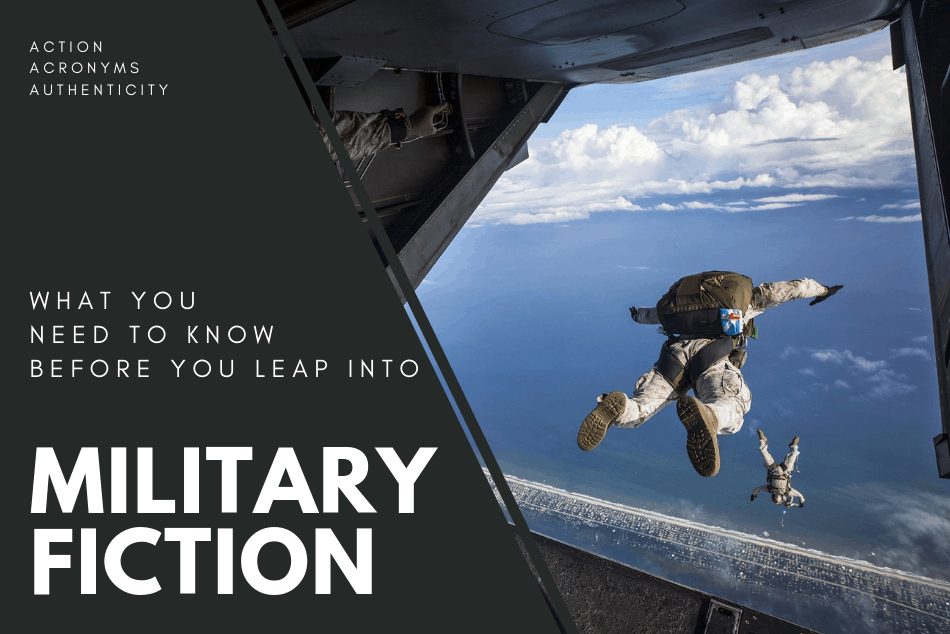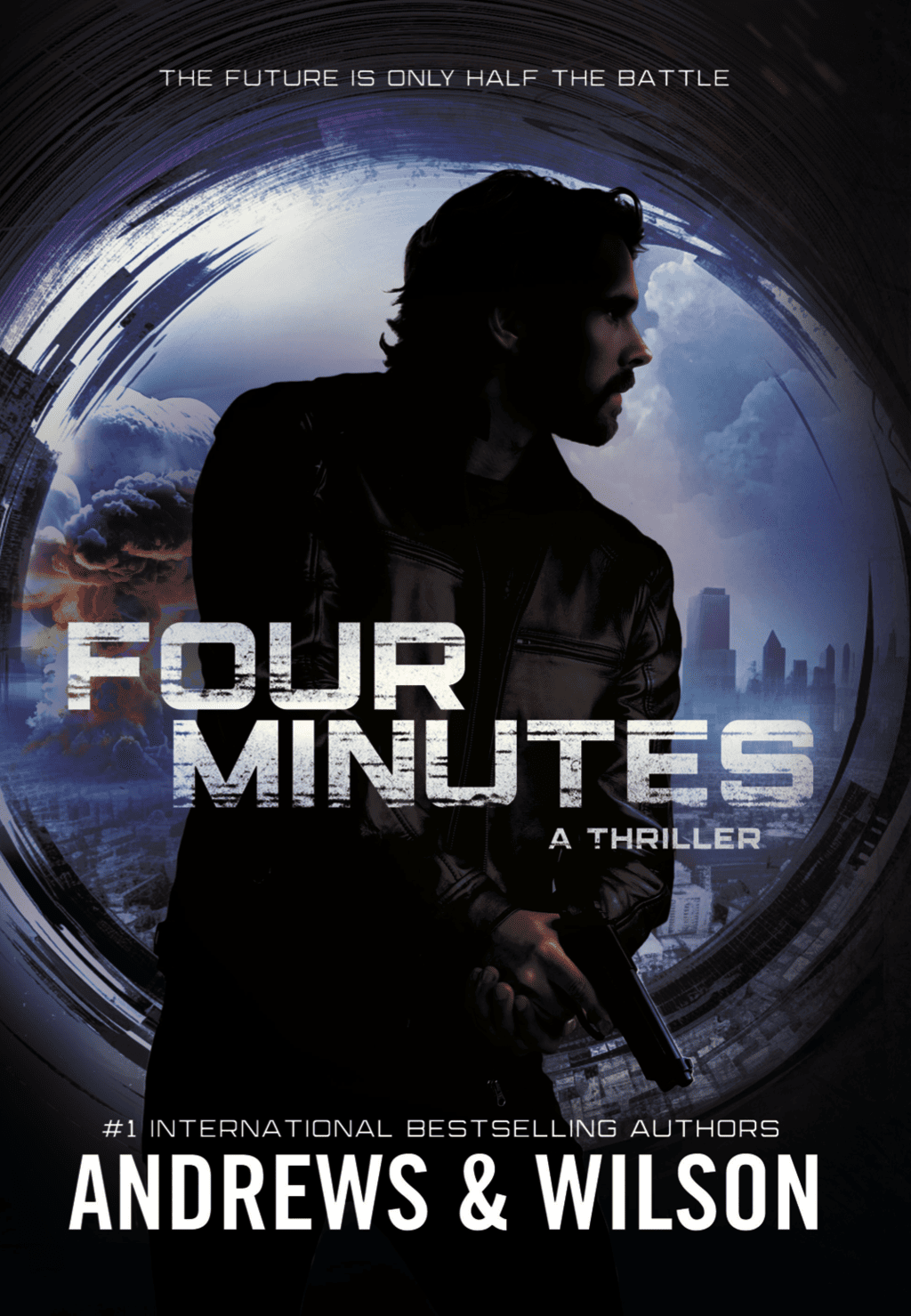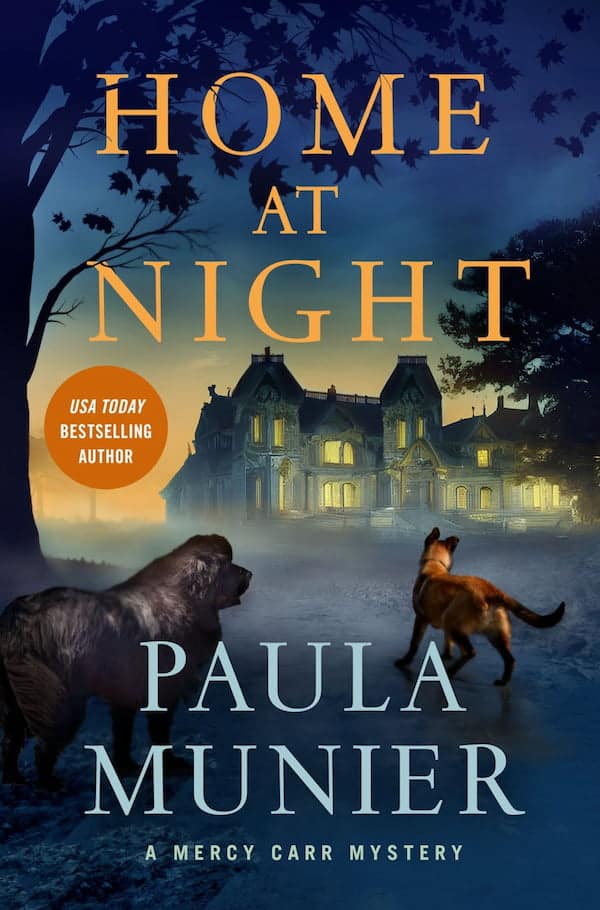You’ve just finished watching the latest episode of SEAL TEAM. Your heart is pounding, your adrenaline is pumping, and you say to yourself, “I’ve got an idea for a kickass military thriller, and by God, I’m going to write it.” Hooyah!
You’re motivated, you have an idea, and you’ve seen enough gun battles on the big screen that you’re confident you can jam out the next Patriot Games. But before you jump out of that perfectly good airplane for the freefall adventure of your life, don’t forget to review your mission parameters and check your gear.
What the heck is a TOC?
John Dempsey slipped his SAPI plate into his kit, lowered his NVGs, and brought his SOPMOD M4 up into a combat carry. SIGINT had their HVT in a heavily guarded compound outside Irbil, and spooks in the TOC had warned him that the EXFIL would be a challenge because there was no QRF on standby tonight if the op went to hell…
If this contrived paragraph reads like Latin to you, then Houston, we may have a problem. You don’t have to be a military veteran to write military fiction (Tom Clancy never served, and his legacy speaks for itself), but a reasonable level of familiarity with the Armed Forces is the price of admission for writing in the genre. I’m going to tell you straight, the majority of the authors who are succeeding in today’s military fiction market are veterans, current or former employees of government agencies that interface with the Armed Forces (e.g., CIA, NSA, FBI, DHS, etcetera), or experienced authors who have strong connections with resources in the various communities.
Today’s military genre readers are educated, savvy, and discerning, and if your subject matter expertise doesn’t reach the minimum benchmark, they will eat you alive in their reviews and ratings. So, if you’ve never served, never worked in the government, never had firsthand experience with firearms and weapons platforms, and don’t know any subject matter experts who do, then you might think twice about whether military fiction is the right platform for you.
Action, acronyms, & authenticity
Throwing around a bunch of acronyms and regurgitating detailed descriptions of guns and weapons systems from Wikipedia or the manufacturer’s websites, does not military fiction make. I confess, there is an Acronym Glossary in the back of every TIER ONE novel, but most of the acronyms in good military fiction appear naturally in the dialogue. They are not used to impress but rather as a reflection of how soldiers and spooks actually talk. A Navy SEAL would never say Joint Special Operations Command in rapid dialogue. He’d say JSOC (jay-sock). There’s a unique lingo and cadence to the way operators, pilots, submarine drivers, and intelligence analysts talk. In some respects, it’s a little bit like speaking a foreign language. You might have a formable working knowledge of Spanish, but if you go to Madrid and start pretending you’re a local, the actual locals will call you out as an imposter in a heartbeat. When it comes to acronyms and descriptions of weapons and tactics, Goldilocks Rules apply—try to find the natural sweet spot in the middle. Go overboard and the readers will get annoyed or think you’re a poser, write too little and you’ll come across as an outsider or an author who lacks subject matter expertise.
If I didn’t scare you off, then you’re probably wondering, “How do I create an authentic military hero and write compelling action sequences?” I will now briefly address both these questions at a high level, and then come back to each in future posts where I’ll drill down into the details.
Soldiers, SEALs, and spooks are people too
Compelling characters sell books. If your novel reads like a gun brochure, then you’re doing it wrong. Once you’ve passed the authenticity hurdle, character development takes priority. Tom Clancy sold millions of books, not because of his meticulous detailing of American and Russian weapon systems, but because Jack Ryan is a compelling protagonist. As a fan and reader of Clancy books, I kept turning the pages because I wanted to know what happened to Jack, not because I wanted to read another two pages about the USS Dallas’s sonar system. When writing military fiction, it is essential not to forget that the men and women serving at the pointy tip of the spear live two lives—there’s the life they live in uniform, and there’s the life they leave behind at home when they deploy. They build relationships (some healthy, some conflicted) in both areas, and these relationships are what drive their behaviors and influence their feelings. Potentially more than any other thriller genre, military fiction is by design a rich platform to explore the dichotomy and duality of character and human relationships.
The “tick on the hound” perspective
When my co-author, Jeffrey Wilson, and I conceived the Tier One military thriller series we decided from the outset that we wanted to write from something we called the “tick on the hound” perspective. In other words, we wanted our readers to feel like they were virtually stuck to our character’s backs, looking at the world through the same lens as the characters. For example, if the action sequence we’re righting is at night and the SEALs are using night vision goggles (NVGs), then the visual descriptions of what the characters see are described in night vision parameters. If a helicopter hop is required, then the reader rides in the helo with the team and experiences all the noises, vibrations, smells, sarcastic banter, and stomach lurching maneuvers.
In action sequences, an intimate POV pulls the reader out of his or her comfort zone and into the conflict. In this way, the readers’ familiarity with a character’s weapon, is less important than the character’s familiarity with it. If your hero always uses a SOPMOD M4, and is so familiar with it that it feels like an extension of his body, he would not spend a second of internal monologue pondering its specifications or its pros and cons compared to an AK-47. What is compelling for the reader is the character’s proficiency with the weapon and how he utilizes it either effectively or ineffectively in a particular engagement. Is it business as usual for your hero in the scene, or is his world going to hell because of circumstance? If you have combat experience, then contemplating this question will be second nature. If you don’t, then it is imperative that you spend time talking with people who have.
Before you jump, complete the checklist
Before putting pen to paper, ask yourself the following questions:
- Why do I want to write military fiction?
- Do I have sufficient knowledge and experience to write an authentic thriller?
- If the answer is no, do I have resources and people I can call upon to help me.
If the answer is yes, then remember these three pieces of advice from a military fiction author:
When in doubt, Goldilocks Rules apply to acronym use and descriptive prose of weapons and tactics. Too little and readers will question your authenticity, too much, and eye-rolls will abound.
- Soldiers, SEALs, and spooks are people too. Compelling characters sell books; gun brochures sell guns.
- Try writing with “tick on the hound” mentality to keep to immerse your reader in the tension and stakes of moment, instead of trying to wow them with your subject matter knowledge.
Have more to say about writing military fiction? Chat with us on Facebook.





